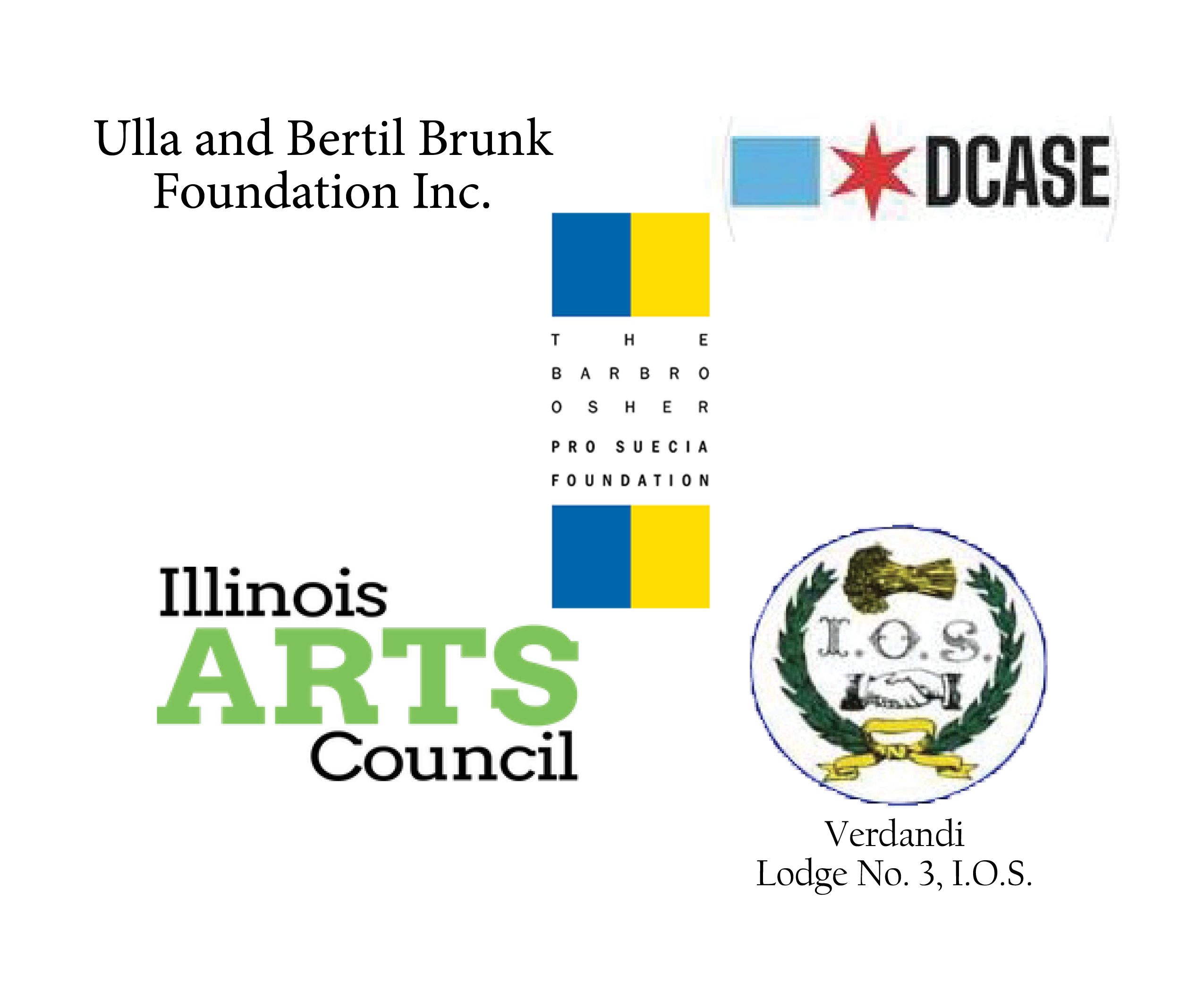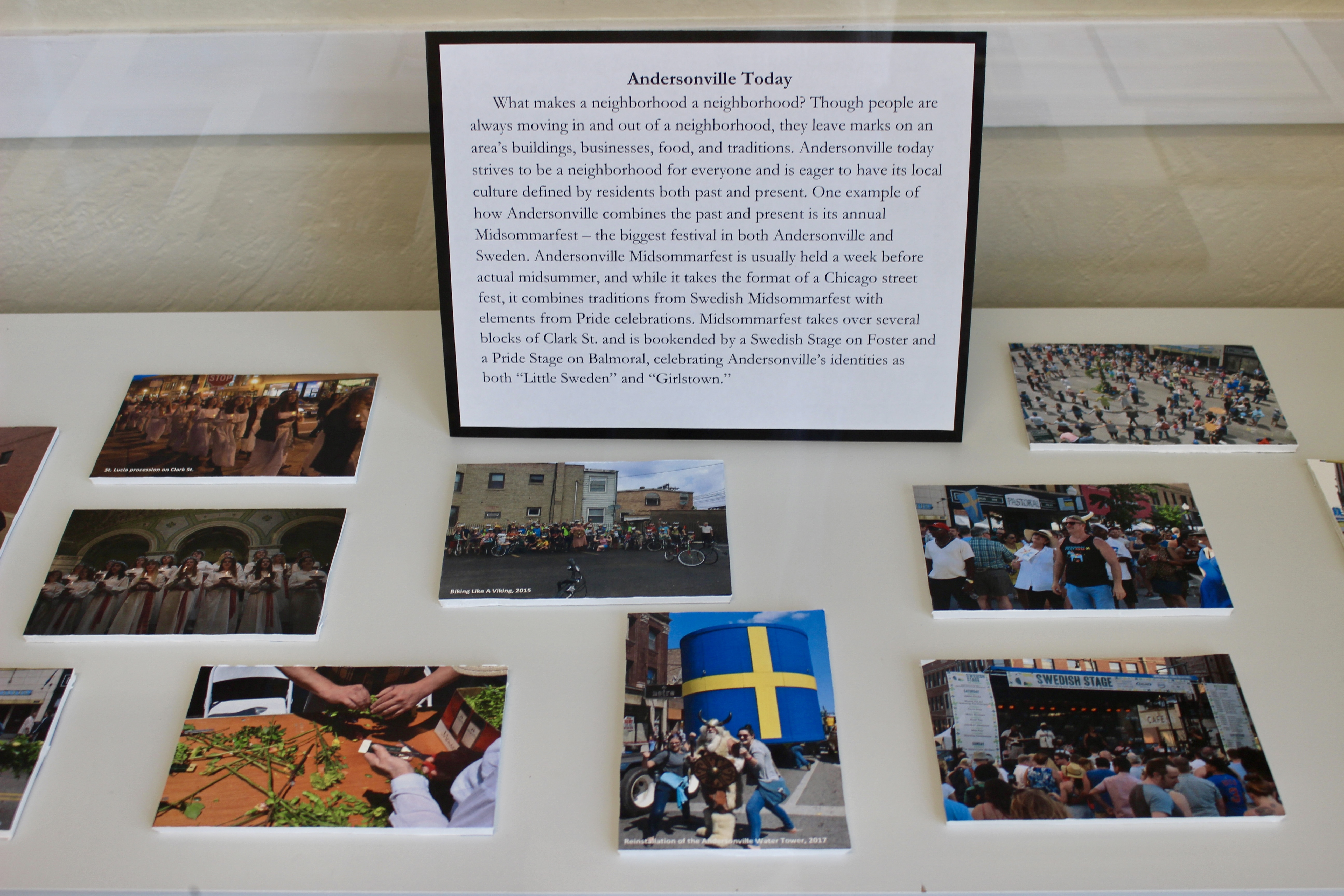Special Exhibits
Main Gallery
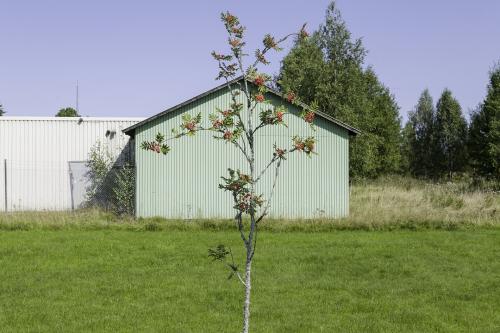 |
Home + Away / Hemma + BortaPhotographs by Allen WheatcroftFriday, Sept. 19 - Sunday, Nov. 30A portrait of everyday life in Sörmland, Sweden, and Chicago’s bustling Northside. Depicting Chicago’s Northside or Sweden’s Birch Road, Wheatcroft shows that a cold eye needn’t be cruel and that a warm eye needn’t be wet, that sentiment can be controlled without being crushed, conveyed without being sappy. .
|
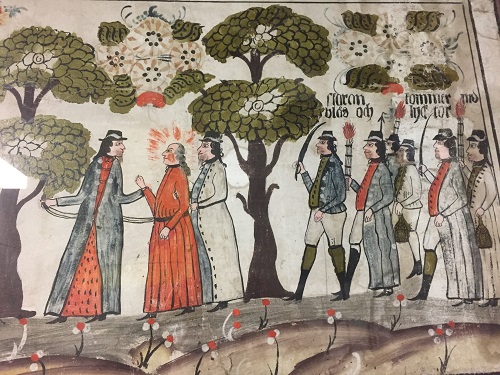 |
BonaderFriday, Dec. 12 - Sunday, Jan. 11, 2026One of the most remarkable examples of Scandinavian folk art is the painted picture indigenous to the Swedish peasant home. The commonly used name for these peasant paintings is bonader, and their provenance was to decorate the walls and ceilings of the homes at Christmas time and on feast days, thus adding a note of color and gaiety to the otherwise dark interiors. Between festivities, these canvas or paper panels were taken down and carefully kept, to become a part of the family inheritance. The collection of bonader at the Museum is a collection of extraordinary works on linen and paper, with vegetable and mineral pigments that achieve arrays of color. They were sized for specific wall spaces and hung unframed. Several of the artists were identified, and more than 100 may have practiced the craft. Donated to the Museum in 2000 by the Art Institute of Chicago, the 29 Bonader represent the eighth largest known collection. They originated in 1931 among acquisitions from world traveler Florence Dibell Bartlett of Chicago. Inspired by what she viewed as a decline in creation of folk art, Bartlett acquired pieces she found in 37 countries. She was the founder in 1953 of the Museum of International Folk Art in Santa Fe, New Mexico. |
Raoul Wallenberg Gallery
 |
Naturens Rytmer / Rhythms of NatureArtwork by Maria JönssonFriday, Nov. 7, 2025 – Sunday, Feb. 15, 2026
|
|
|
Andersonville Through the Ages
|
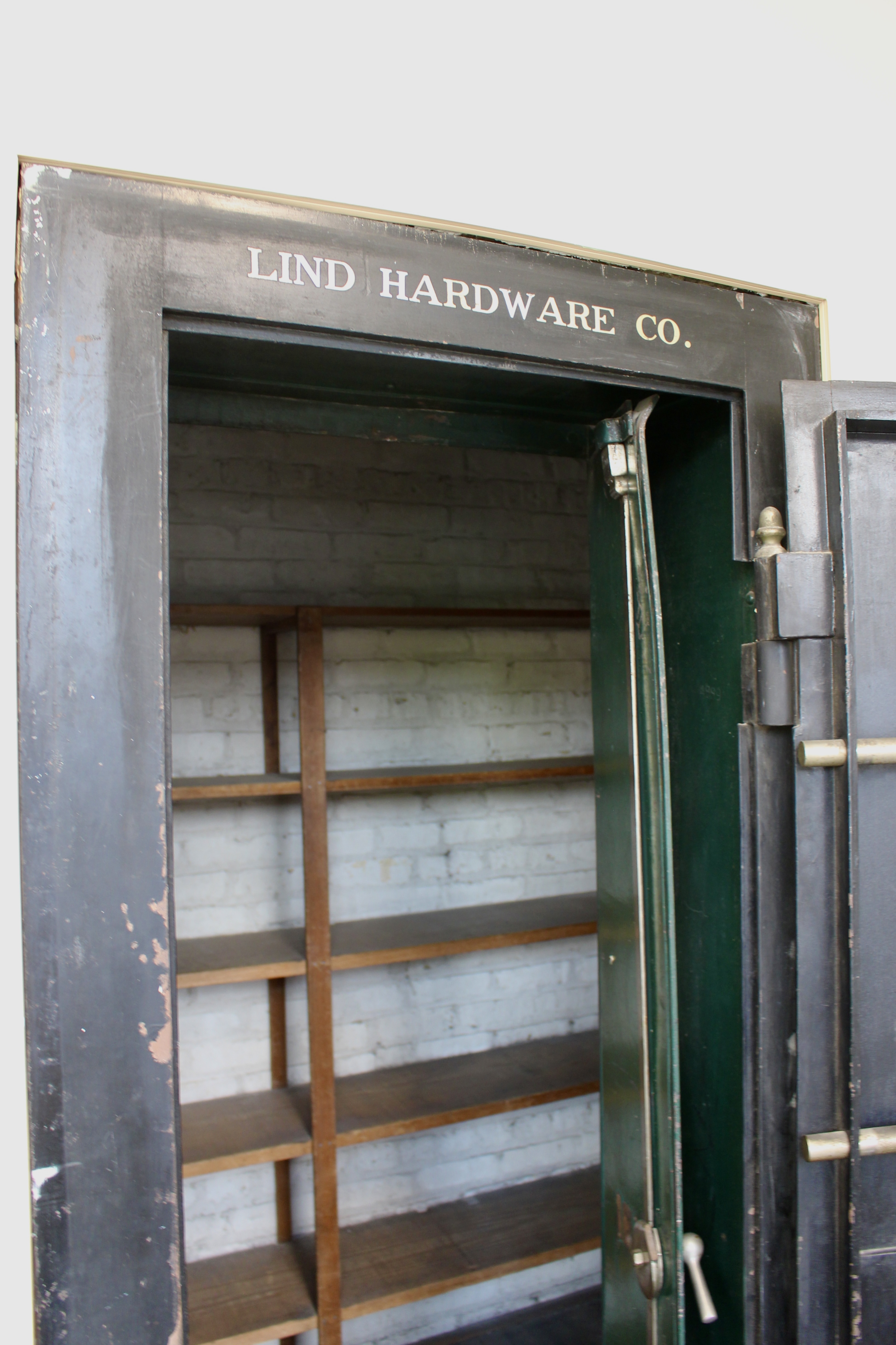 |
Sponsored by the Lind Family and Created in Collaboration with the DePaul History 391 Class of Spring 2020In The Lind Room on the Museum's second floor, the Andersonville Through the Ages exhibit showcases how Andersonville became and remained an area rich in Swedish heritage. It illustrates how Andersonville has evolved over the years to incorporate contemporary tastes and hold new community celebrations, all the while holding onto its Swedish character. |
Traveling Exhibit: Available for Loan
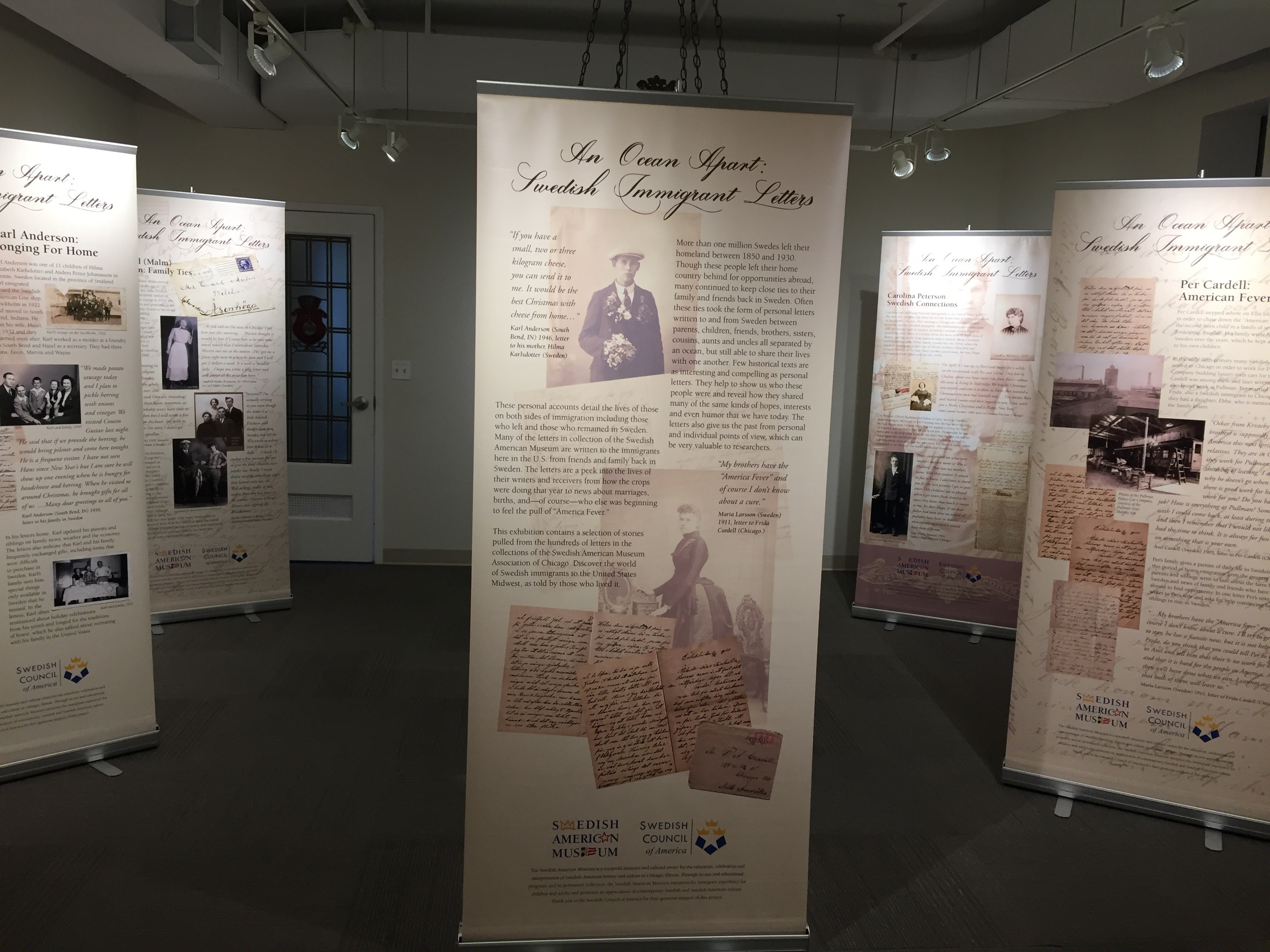 |
An Ocean Apart: Swedish Immigrant LettersBy the Swedish American MuseumSponsored by the Swedish Council of America More than one million Swedes left their homeland between 1850 and 1930. Though they left their home country behind for opportunities abroad, many continued to keep close ties to their family and friends back in Sweden. Often these ties took the form of personal letters written to and from Sweden between parents, children, friends, brothers, sisters, cousins, aunts and uncles all separated by an ocean, but still able to share their lives with one another. Few historical texts are as interesting and compelling as personal letters. They offer an insight into the lives of early 20th century Swedish immigrants and reveal how they shared many of the same kinds of hopes, interests and even humor that we have today. The letters also give us a look into the past from personal and individual points of view. These personal accounts detail the lives of those on both sides of immigration including those who left and those who remained in Sweden. Many of the letters in collection of the Swedish American Museum were written to the immigrants here in the U.S. from friends and family back in Sweden. The letters are a peek into the lives of their writers and receivers from how the crops were doing that year to news about marriages, births and—of course—who else was beginning to feel the pull of “America Fever.” This exhibition contains a selection of stories pulled from the hundreds of letters in the collection of the Swedish American Museum. Discover the world of Swedish immigrants to the United States Midwest, as told by those who lived it. Exhibition Materials: If you are interested, please contact Sarah Hawkinson, Curator, at shawkinson@samac.org
|
Please note that at times we use exhibit spaces for events during Museum hours and viewing can be limited.
All of our exhibits are wheelchair accessible.
Sponsors of our Temporary Exhibits:
